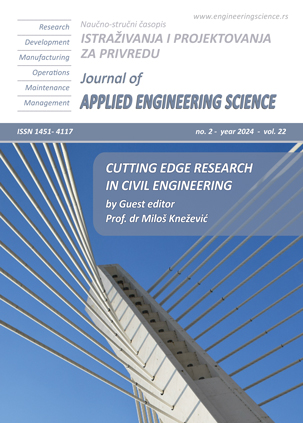FIRE HAZARD AND FIRE RISK ASSESSMENT OF URBAN AREAS IN NORTH MACEDONIA
Abstract
Fire risk analysis in urban areas is a critical component of urban planning and safety management. It involves assessing the likelihood of fires occurring and the potential impact of those fires on people, property, and the environment. First step is identification of fire hazard. This step involves identification of potential sources of ignition and fuel sources. Next step is assessment of vulnerable assets. Urban areas contain various assets that may be vulnerable to fire, including residential buildings, commercial properties, industrial facilities, transportation infrastructure, and critical facilities such as hospitals and schools. Fire risk analysis involves assessing the vulnerability of these assets to fire and the potential consequences of damage or loss. Evaluation of Fire Spread means understanding how fires may spread within urban areas. It is crucial for assessing fire risk. Factors such as building density, construction materials, urban layout, and prevailing weather conditions can influence the spread of fire. Fire risk analysis also considers the effectiveness of fire prevention measures and emergency response capabilities in urban areas. This includes evaluation of the availability of firefighting resources, the adequacy of fire detection and alarm systems, access to water supplies, and evacuation plans. In addition to assessing physical risks, fire risk analysis may also involve evaluating the vulnerability of specific communities within urban areas. Factors such as socioeconomic status, demographic characteristics, and access to resources can influence the ability of communities to prevent, mitigate, and recover from fires. Overall, fire risk analysis in urban areas is essential for enhancing community safety, protecting property and infrastructure, and promoting sustainable urban development. By understanding and mitigating fire risks, cities can become more resilient to fire-related disasters. This paper presents the results of the fire risk analysis of the urban areas in North Macedonia. Population density and build-up density significantly affect the fire risk. Due to its dense built-up area, Skopje has the highest fire incidence compared to Struga, Gostivar and Strumica.
References
World Economic Forum. (2021). Urban fires: Here's how to build safer cities. Retrieved from https://www.weforum.org/agenda/2021/02/fire-safety-risk-infrastructure-urban-environment-cities-buildings-authorities/
United Nations. (2015). Sendai framework for disaster risk reduction 2015-2030. UN World Conference on Disaster Risk Reduction, Sendai, Japan
Watts, J. M. (1991). Criteria for fire risk ranking. Fire Safety Science, 3, 457-466. DOI: 10.3801/IAFSS.FSS.3-457
Bennetts, I. D., & Thomas, I. R. (2002). Designing buildings for fire safety: A risk perspective. Progress in Structural Engineering and Materials, 4(2), 224-240
Brzezinska, D., & Bryant, P. (2021). Risk Index Method – A tool for building fire safety assessment. Journal of Applied Sciences, 11(8), 3566
Hall, J. R., & Sekizawa, A. (1991). Fire risk analysis: General conceptual framework for describing models. Journal of Fire Technology, 27(1), 33-53
Yung, D. (2009). Principles of fire risk assessment in buildings. John Wiley & Sons. ISBN: 978-0-470-85402-0
International Association of Fire and Rescue Services - Center of Fire Statistics. (2022). Report No. 27
International Association of Fire and Rescue Services - Center of Fire Statistics. (2023). Report No. 27

